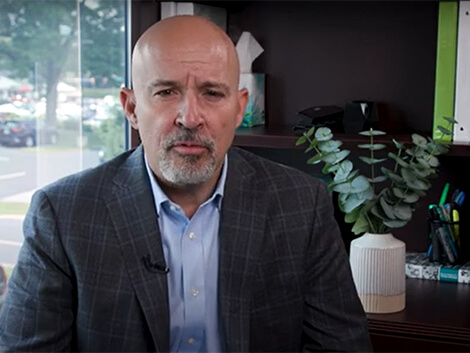Advanced Technology Meets Rehabilitation
How advanced rehabilitation technologies help patient recovery
Our physician-led multidisciplinary care team assesses patients and develops personalized treatment plans to meet patient needs. Combining the expert training of our therapists with leading edge robotics and rehabilitation technologies, we work to improve the skills that enable patients to return to daily life and the activities they enjoy.
Discover how these advanced rehabilitation technologies help patients recover in our hospital.
-
.jpg?h=180&w=270&rev=6425f181ccbd4f119608a5714eb68ec4&t=20240423183237) Ekso Bionics Exoskeleton: A wearable robotic device that helps a patient stand and move their legs. It can be used to both help a patient regain their ability to walk independently or resume normal walking patterns.
Ekso Bionics Exoskeleton: A wearable robotic device that helps a patient stand and move their legs. It can be used to both help a patient regain their ability to walk independently or resume normal walking patterns.- Hocoma ArmeoSpring: A robotic arm that supports the weight of a patient’s arm and helps the muscles move while they engage in interactive therapy. This device helps strengthen muscles, improve coordination and increase the range of motion needed for activities such as eating and getting dressed.
-
- Ceiling ambulation track: An overhead track and harness system that supports a patient’s body weight while preventing them from falling. This allows the patient to work on posture, endurance and walking techniques in a safe environment.
-
.jpg?h=180&w=270&rev=9fd52e43a6bd41e0adf92a2e9167f707&t=20240322194203) Bioness H200: A wireless hand rehabilitation system. It uses FES to help patients with weak or paralyzed arms regain skills needed for reaching and grasping. FES mimics electrical brain signals and helps reactivate impaired muscles.
Bioness H200: A wireless hand rehabilitation system. It uses FES to help patients with weak or paralyzed arms regain skills needed for reaching and grasping. FES mimics electrical brain signals and helps reactivate impaired muscles.- Bioness L300 Go: A compact, wireless foot and thigh rehabilitation system that uses FES to stimulate specific muscles that help patients walk more naturally with improved speed and balance. By providing stimulation precisely when and where needed, the device helps patients left their feet to navigate stairs and uneven surfaces.
-
.jpg?h=180&w=270&rev=14d806ec3aae46c79b6256fe4fe06691&t=20240322194203) Bioness Integrated Therapy System (BITS): A large touch screen digital display with programmed exercises to improve the physical, visual and cognitive (thinking) abilities of patients.
Bioness Integrated Therapy System (BITS): A large touch screen digital display with programmed exercises to improve the physical, visual and cognitive (thinking) abilities of patients.
-
.jpg?h=176&w=270&rev=cb8186bde823498f8cfe3a2e9e5f3c8d&t=20240322194203)
- Fiberoptic Evaluation of Swallowing (FEES): A procedure used to assess swallowing through the use of a thin, flexible scope that is passed through the nose to the back of the throat.
- VitalStim: Therapy that uses low-frequency electrical current, passing through external electrodes on the neck, to stimulate inactive swallowing muscles.
-
- XSensor Pressure Mapping: A device that uses electronic sensors to measure the amount of pressure between a patient’s body and a surface, such as a bed or wheelchair seat. Pressure mapping systems help clinicians select an appropriate wheelchair cushion to help protect a patient from damaging their skin.
- Virtualis Virtual Reality: Therapy that uses a virtual reality headset to simulate specific environments where a patient will react to situations using their senses, movements and balance.
- Barihab Treatment & Assessment Platform: As a mat table, this helps therapists work with patients on rolling and stretching. Therapists can also adjust the height and seat and by raising the backrest slowly, help patients use core muscles to sit up and work on transferring positions. Digital data allows therapists to provide instant feedback and track progress.
In addition to these advanced robotics and technologies, our hospital is equipped with a standard roster of rehabilitation equipment to support patients on their recovery journey.

Focus Areas of Recovery
The Four Whys
We specialize in treating patients recovering from a range of medical issues including stroke, brain or spinal cord injuries, surgery or chronic medical conditions.
Let Us Help
We will work closely with you, your family, physician or the referring hospital to ensure a smooth transition to RUSH Specialty Hospital.
